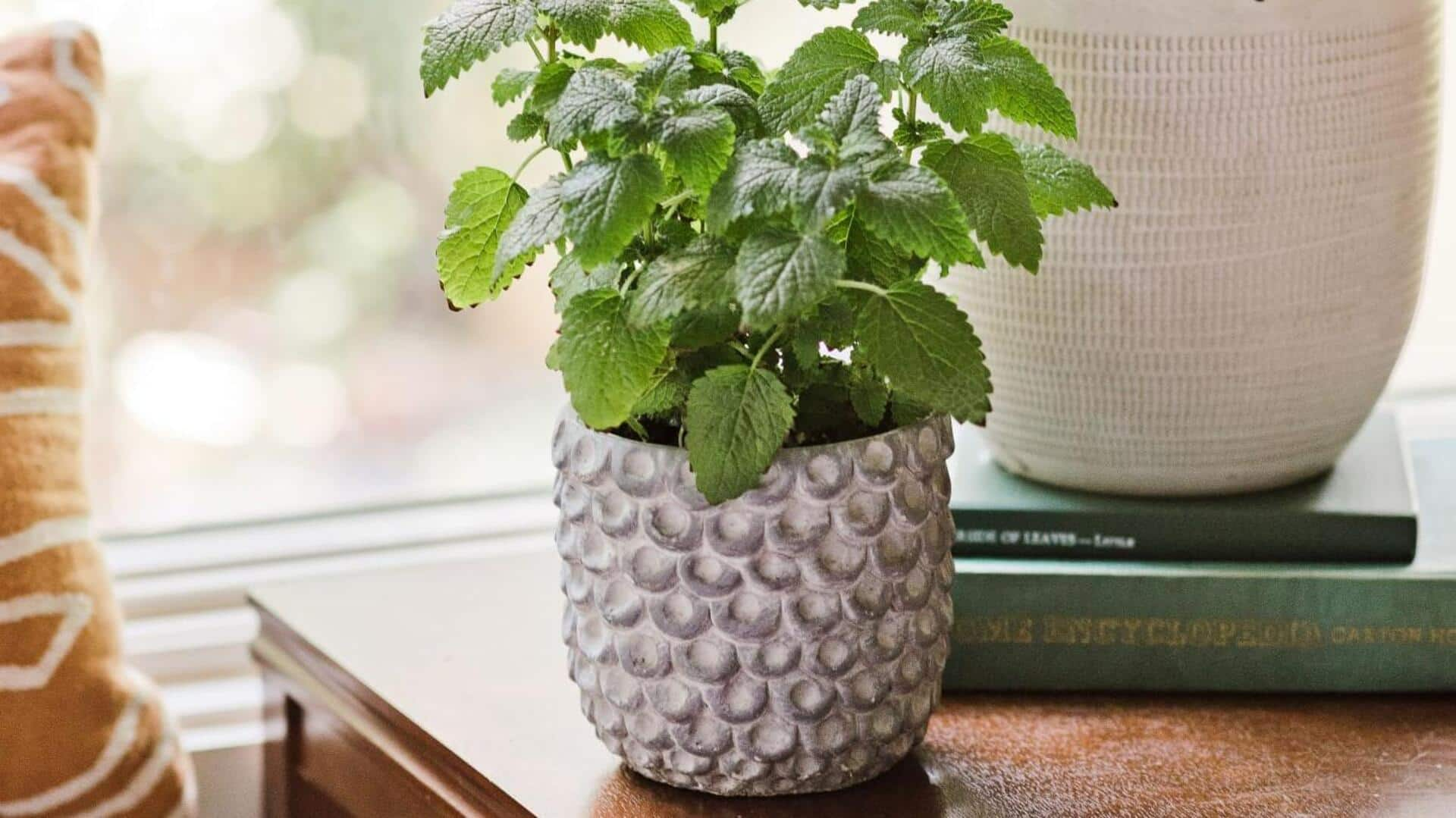
How to grow lemon balm at home
What's the story
Lemon balm, a fragrant herb with a hint of citrus, is a must-have for any balcony garden. Its ease of growth and the ability to thrive in limited space makes it the perfect pick for urban gardeners. With the right care, you can have a thriving lemon balm plant that adds beauty and aroma to your balcony. Here are five practical tips to grow and maintain lemon balm.
Tip 1
Choose the right container
Selecting an appropriate container is key to growing lemon balm on your balcony. Go for pots that are at least 12 inches in diameter to give the roots enough space to spread. Make sure the container has drainage holes to avoid waterlogging, which can damage the plant. A lightweight material such as plastic or fiberglass would be ideal, as it makes handling easy and retains moisture well.
Tip 2
Provide adequate sunlight
Lemon balm flourishes in bright, indirect sunlight. Place your container where it can get at least four hours of sunlight every day, but avoid scorching afternoon rays that can burn the leaves. If your balcony doesn't get enough natural light, you can use grow lights as a supplement to ensure the plant gets enough light for healthy growth.
Tip 3
Water consistently but moderately
While lemon balm likes moisture, overwatering can be detrimental. Water the plant when the top inch of soil feels dry to the touch. Make sure excess water drains out of the pot to avoid root rot. During hot weather, you may need to increase watering frequency, but always check soil moisture first before adding more water.
Tip 4
Prune regularly for bushier growth
Regular pruning is essential for keeping lemon balm plants bushy and healthy. Trim back leaves regularly, especially when they start looking leggy or sparse. Use clean scissors or pruning shears to avoid damaging the plant or introducing disease. Pruning not only encourages new growth but also helps maintain an attractive shape.
Tip 5
Fertilize sparingly with organic options
Fertilizing lemon balm should be done sparingly and with organic options like compost or liquid seaweed extract every four weeks during the growing season. This provides essential nutrients without overwhelming the plant with chemicals. Too much fertilizer can lead to excessive leaf growth at the expense of flavor and aroma, which is not what you want from this delightful herb.